Designing buildings within Planetary Boundaries
A lot of the discussion regarding the impact of humanity on the environment these days revolves around carbon. There’s a good reason for that, as carbon emissions are the primary cause of global warming, which can trigger all kinds of catastrophic events for our planet.
However, it’s important not to forget that keeping our planet livable takes consideration of many aspects. The planetary boundaries framework is a great way to operationalize sustainable development and break these aspects up into actionable components.
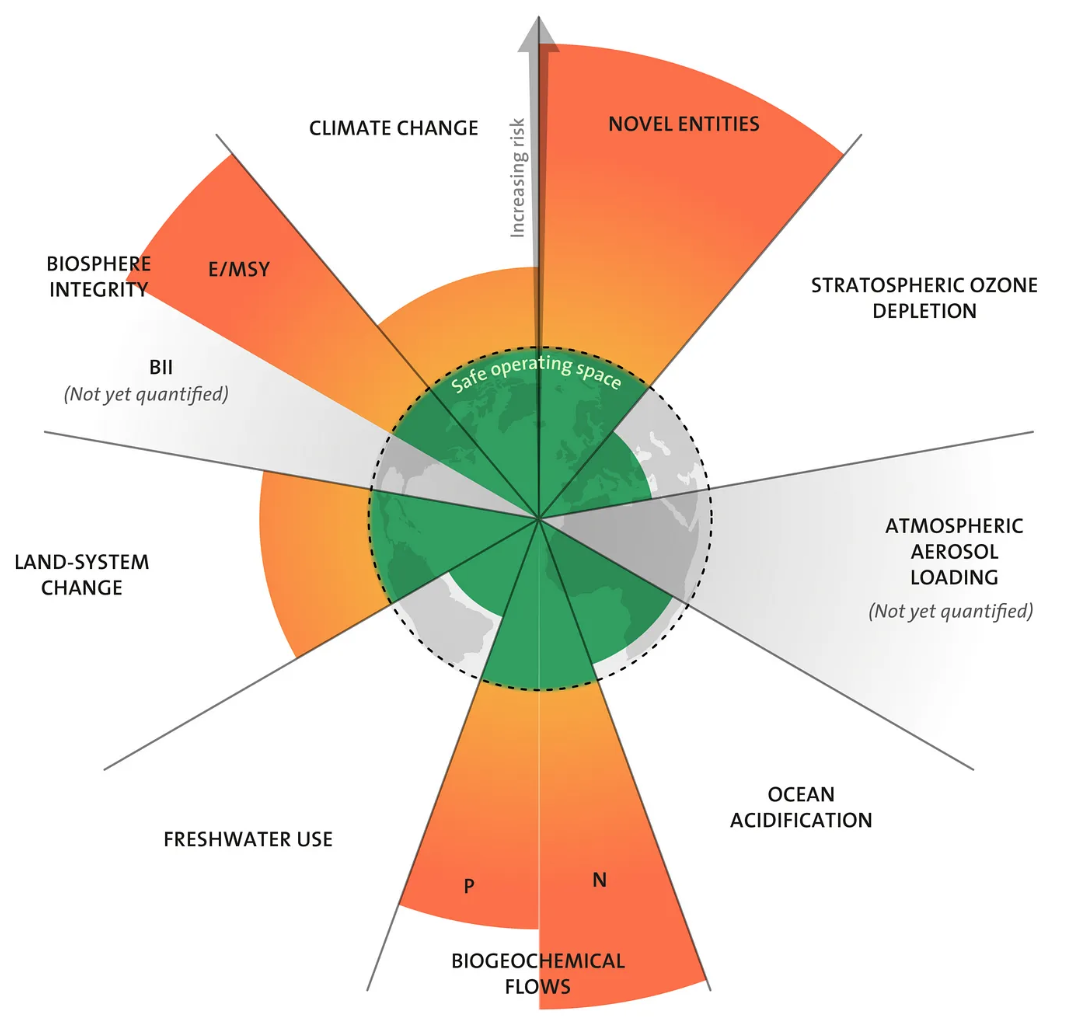
According to the framework, “transgressing one or more planetary boundaries may be deleterious or even catastrophic due to the risk of crossing thresholds that will trigger non-linear, abrupt environmental change within continental-scale to planetary-scale systems.”[source] The Earth system process boundaries mark the safe zone for the planet to the extent that they are not crossed.
What are the planetary boundaries?
The planetary boundaries framework was developed by a team of Earth systems scientists at the Stockholm Resilience Centre to characterize the limits of acceptable alteration to 9 Earth systems:
- Biosphere integrity
- Climate change
- Ocean acidification
- Freshwater use
- Atmospheric aerosol loading
- The introduction of novel entities (e.g. micro-plastics)
- Biogeochemical flows
- Land-system change
- Stratospheric ozone depletion
The goal of the framework is to set science-based targets that humanity must respect to avoid the risk of catastrophic environmental change at the global scale.
Why designers are perfectly placed to address these risks
Designers and engineers are found in a unique position to handle and address the risks associated with crossing the Planetary Boundary thresholds. The decisions taken today in how we design and build can cause the planet to move towards — or further away from — unpredictable environmental events.
The long-term impacts of the built environment can directly affect the lives, behaviours and activities of all living creatures on Earth. They can define how people use space, travel, consume goods and use energy. Designing with the goal of minimizing our impact on the environment can yield benefits for decades and centuries to come.
Actions to start designing within the Planetary Boundaries

Design with technology
Computational design and material innovations can reduce demand for carbon and water intensive materials, as well as materials which require heavy land conversion and resource extraction. Additionally, designing with technologies can lead to higher material efficiency and lower volumes used, which can reduce particulate emissions and pollutants associated with extraction and production.
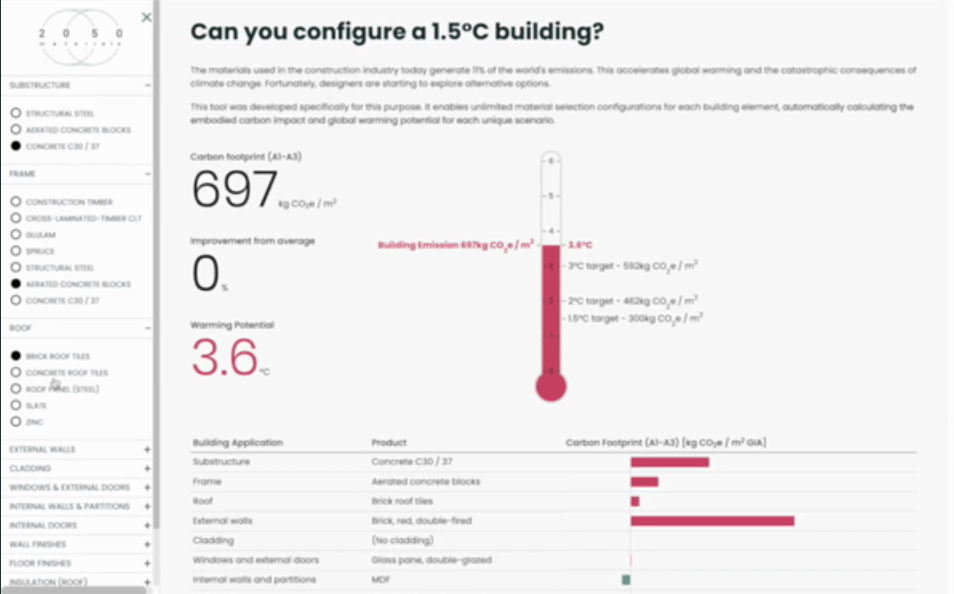
 Have you checked out the first version of our Design Optimization tool? It’s a free tool to see the impact of building material configurations for early design stages.
Have you checked out the first version of our Design Optimization tool? It’s a free tool to see the impact of building material configurations for early design stages.
Circular Material Flows
Creating a circular construction sector implies the re-use of materials into new buildings. This can mitigate environmental degradation associated with material use by reducing the need for raw materials, as well as the need to refine, transport, manufacture, and dispose of old materials. Consequently, this leads to lower emissions, freshwater use, particulate matter and waste.
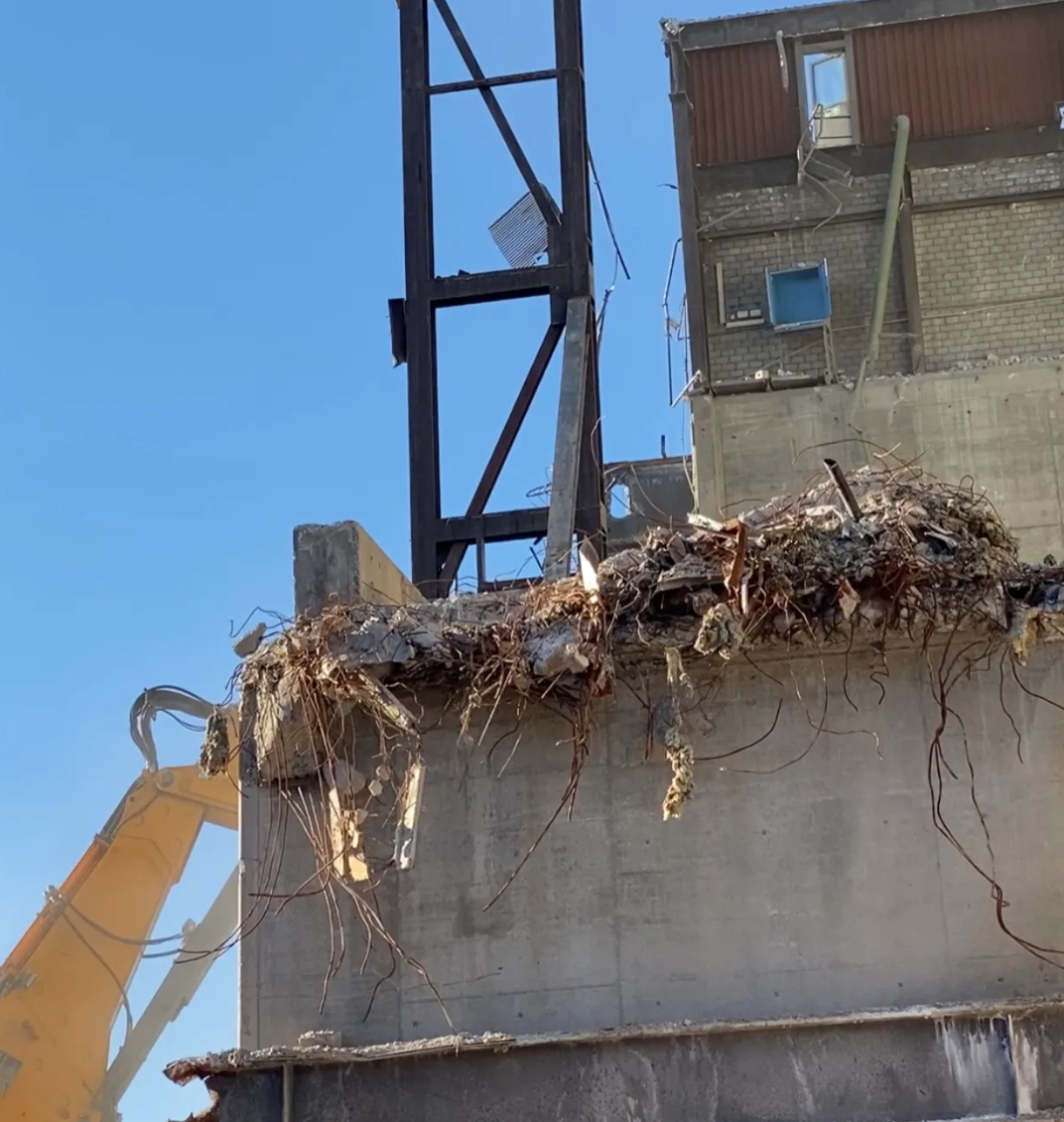
Sustainable Materials
Careful consideration and selection of the building materials that make up a structure can have a massive impact on remaining within planetary boundaries. Sustainable materials can be low-carbon, sustainably extracted, transported, and processed, and can contain very low amounts of compounds known to be harmful to the environment and people. This can reduce their ecological footprint and contribute in creating a world within planetary boundaries.
Specifically, sustainable material selection can lead to low-carbon buildings, which directly contribute to slowing down climate change by reducing the embodied CO2e. Meanwhile, sustainable sourcing (e.g. using waste by-products as the raw material) can lead to lower embodied water demand, associated particulate emissions and stop the introduction of novel entities such as micro-plastics.
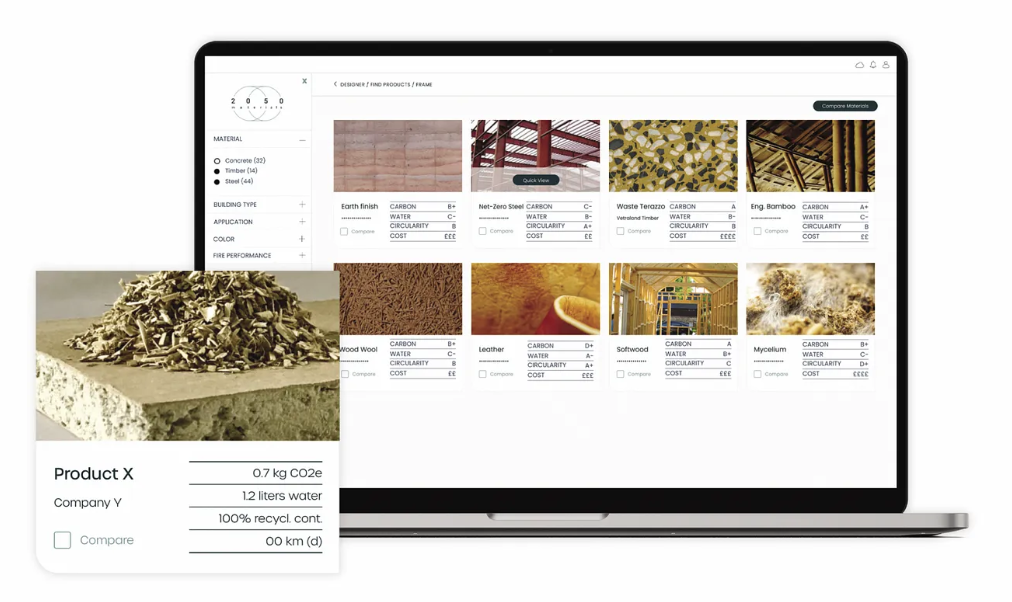
2050 Materials simplifies the process of finding, comparing and specifying sustainable materials.
 Want to see examples of sustainable materials that allow you to design within the planetary boundaries? Go to app.2050-materials.com and sign up for our Beta!
Want to see examples of sustainable materials that allow you to design within the planetary boundaries? Go to app.2050-materials.com and sign up for our Beta!
Other actions
Why stop there? There’s many things designers, engineers and planners can do to transform the impact the built environment has on keeping humanity within the planetary boundaries. Examples of actions related to neighbourhoods, cities and catchments are outlined in detail in Arup’s latest report on the Planetary Boundary Framework.
The time to act is now
The Planetary Boundary Framework helps us to understand the limits of Earth’s capacity when it comes to supporting the consumption patterns of our societies.
Staying within the boundaries will require a significant changes of the “business-as-usual”. The way we we design and build can be a driver in this change.
2050 Materials is the platform for the construction materials of the future, available today. Our research and product data allows designers, architects and contractors to design buildings in line with a regenerative world that keeps us within planetary boundaries.
Reach out to share your ideas with us and to get a demo of our platform!
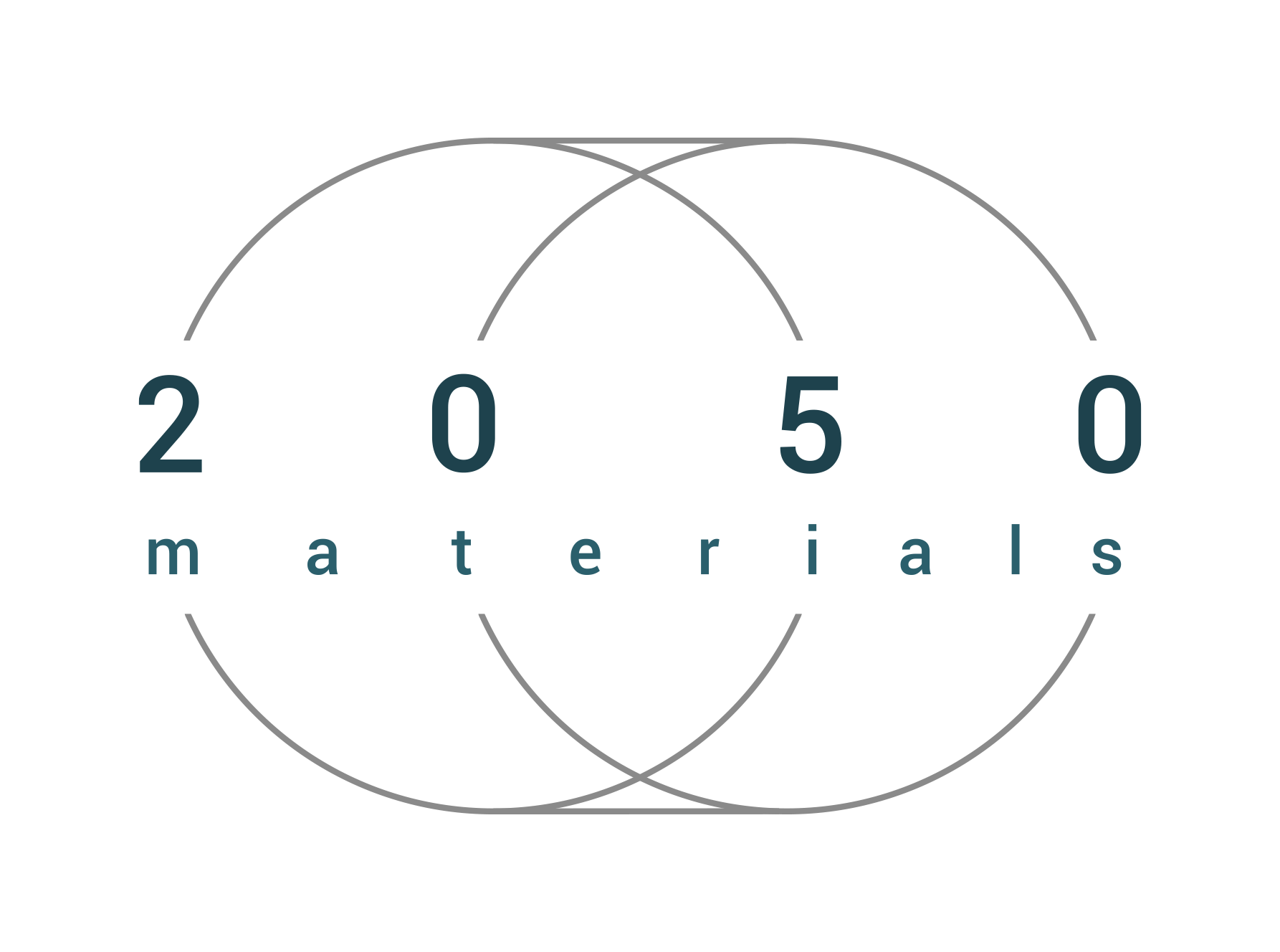
Related articles

Climate-Resilient Materials for the Built Environment: A Data-Centred Prime
As climate volatility intensifies, resilience metrics are fast becoming as critical as carbon data in material selection. This article outlines why adaptation is now a design imperative, how materials can be evaluated through a systems lens, and what KPIs project teams should demand. From self-healing concrete to fire-rated façades, we present a structured taxonomy of resilient materials, explain how to embed this intelligence into digital design workflows, and propose next steps for specification, benchmarking, and procurement.
Read more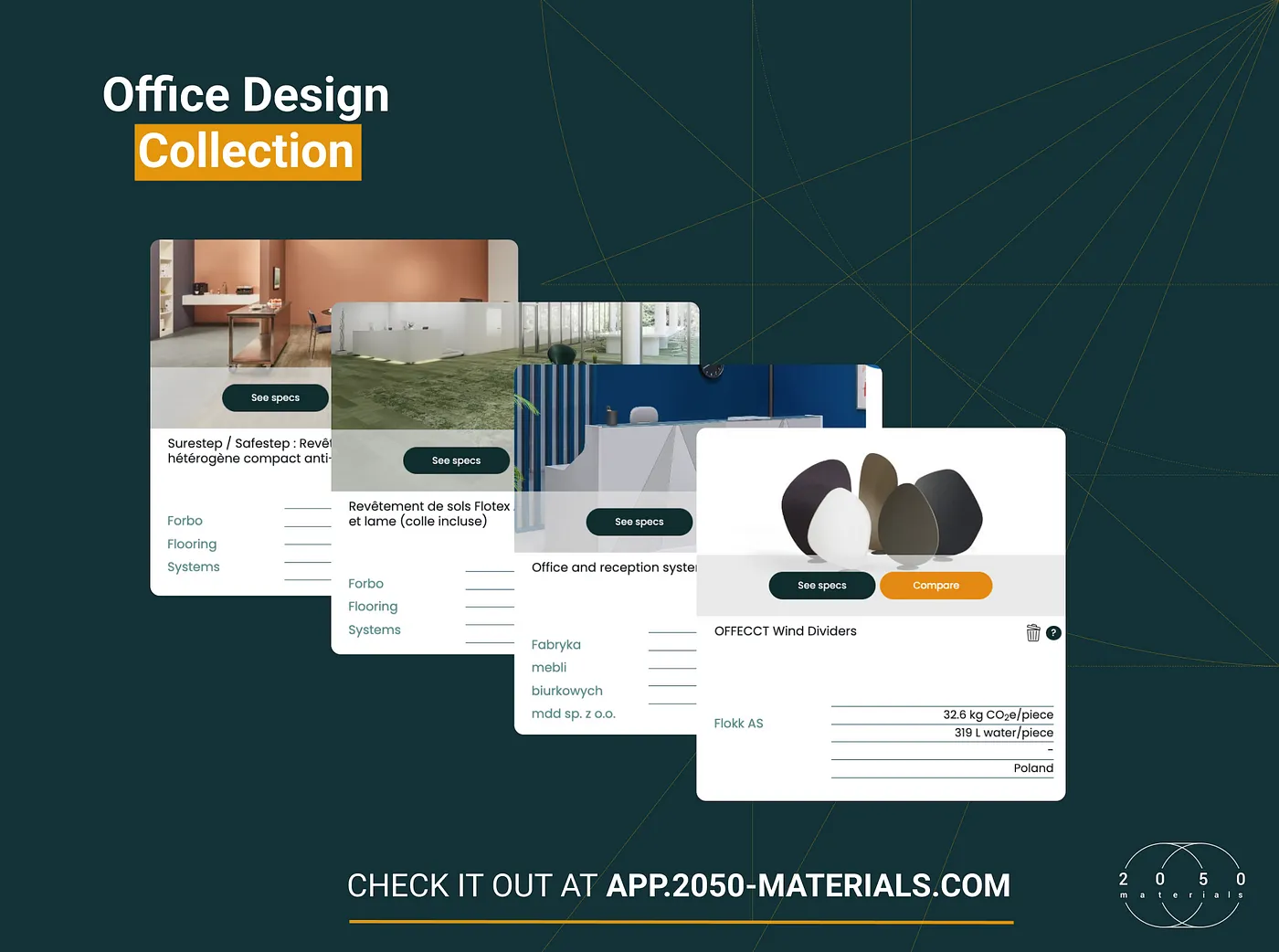
The Most Interesting Low Carbon Products in Office Design
In this article and collection, we highlight 11 outstanding products that contribute to a lower carbon footprint in office design.
Read more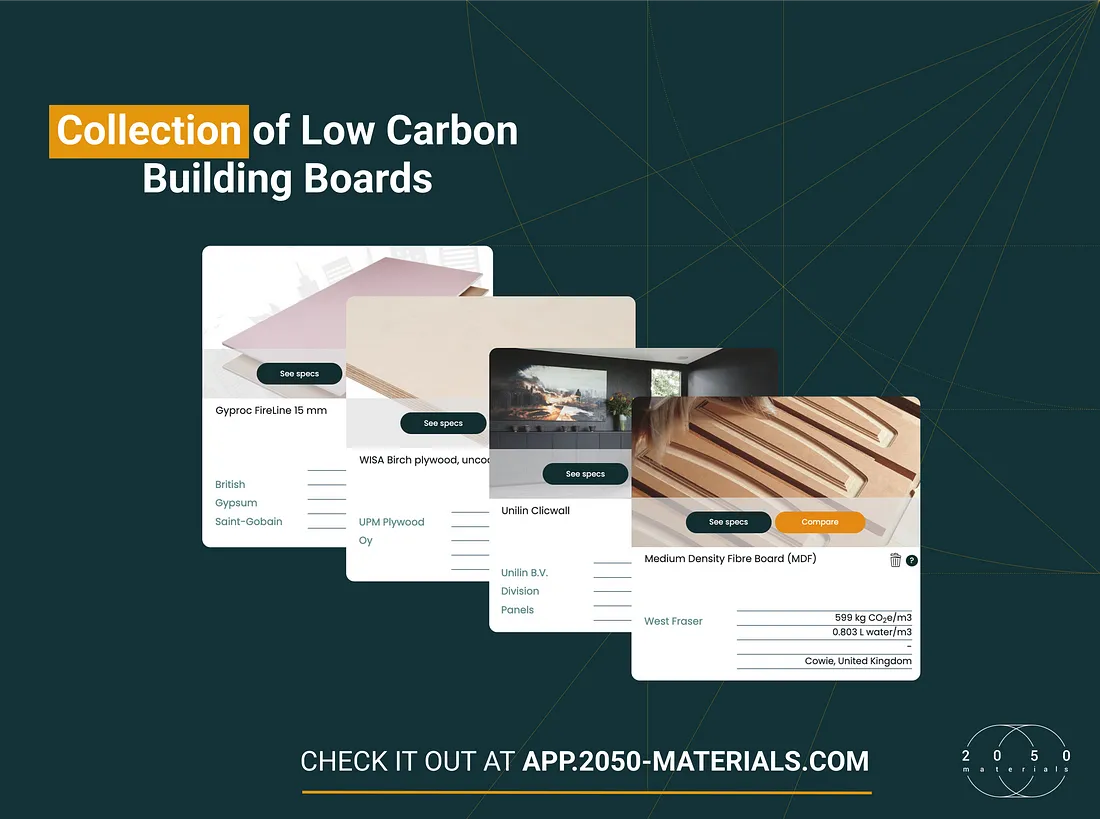
Top Low Carbon Building Boards: Performance, Benefits, and Use Cases
The building boards highlighted in this article and collection showcase low-carbon innovation in modern construction.
Read more